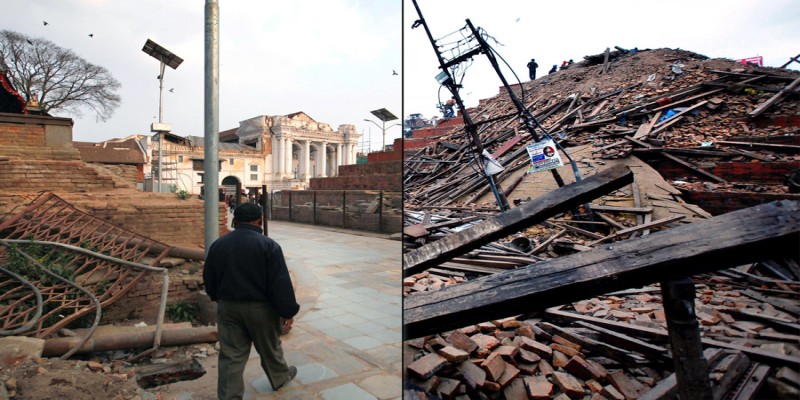
Media Monitoring of #NepalEarthquake - May 15
As the third week since disaster comes to the close, reactions are still flowing in. As the media coverage reflects, it is more about rebuilding and reconstruction now. Development agencies such as UN Women and UNICEF are concerned about the lives of women and children. Extensive media coverage has its own pros and cons. Christiano Ronaldo donating 5 million pound as aid to Nepal Earthquake victims has being proved as a fake news has been a major disappointment – not only in terms of receiving aid support but also raising a big question on the ‘credibility check’ on the news. Other highlights of the media coverage:
Key Statistics
423 million dollars has been pledged for reconstruction of Nepal post the earthquake and so far only 13 percent has been funded. The five major sectors of funding so far from the international community include:
- Logistics – 24%
- Shelter and Non-Food Items (NFIs) – 21%
- Coordination – 16%
- Health – 12%
- Water, Sanitation and Hygiene – 6%
UNOCHA states that close to 300 (294) organizations have been working in 64 districts of Nepal for the earthquake affected.
Similarly, UNICEF ROSA claims that 70% of birthing centres in 14 affected districts have been destroyed or damaged and maternity services have been severely affected. It claims that 12 babies born every hour are without basic health care in worst hit areas. UN Women also claims that 318000 female headed households are in need of support in worst hit districts.
Rescue and Relief Efforts
After several assumptions and rumours, finally it has been confirmed that the US navy helicopter has been found in wrecked condition in a village of Dolakha, 11200 feet above the sea level and Nepali rescuers have found 3 bodies near the chopper, Epoch Times claims. Apart from the foreign teams, several organizations based in Nepal have been providing relief support. Save the Children claims that it has provided 18000 tarpaulins and shelter kits to the affected while Heifer International has provided relief supplies to 10,434 families. World Food Programme has been operating through Humanitarian Staging Area (HAS) for emergency preparedness. UN Women also has been establishing and training women’s groups to help prevent gender based violence in 16 displacement camps.
Diverse Range of Support
Nepal has also experienced diverse range of support for the earthquake affected. Xinhua News Agency reports that psychologists from Hong Kong have been providing counselling to earthquake victims. They are representatives of Post Crisis Counselling Network. By asking 5 questions, they are able to know the mental status of the victims to determine if they have post traumatic stress disorder (PTSD). Similarly, Translators without Borders has also been supporting relief operations through translation service for the foreign expert teams. The agency claims that it has been providing the following services such as:
- Translated over 500 terms into Nepali, Newari, and Hindi for search and rescue teams and for people monitoring messages coming from the affected populations.
- Translated seven approved Twitter messages about first aid and protection during/after an earthquake that have been used widely by all aid organizations.
- Translated and distributed a comprehensive First Aid document, English to Nepali.
- Created and distributed language profiles to help first responders.
- Translated and distributed ‘after earthquake’ messaging from the Centers for Disease Control.
Challenges, Risks and Opportunities
According to Nepali Times, a major challenge for Nepal is to provide short term shelter and long term housing in mainly in rural areas but also in ravaged urban centres. UNDP also states that providing shelter for the quake displaced and clearing debris before the monsoon season is critical. UNDP also highlights the risks of women living under the tents. With no toilets left standing women have to relieve themselves in the open. Women are ashamed to do this out in the open during the day and afraid to go out in the night. Nevertheless, it also claims that the earthquake provides a good opportunity for Nepal to build its future.
Mental status of the survivors has also been severely affected due to the earthquake and the subsequent aftershocks. One individual on Twitter expresses, “Earthquake is coming in such a fashion that not only the houses have been cracked; our minds also have been cracked”. Similarly, another individual after witnessing the Sindhupalchowk disaster, writes, “The cities shaken by Nepal Quake in Sindhupalchowk district are becoming ghost cities due to huge devastation”.
Resilience is the key at this point of time as Jane Moller Hansen opines, “Resilient and Self-reliant spirit of Nepali people to restore homes, heritage, culture and identity of Nepal”.






Comments(0)
No comments found.